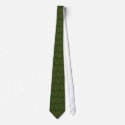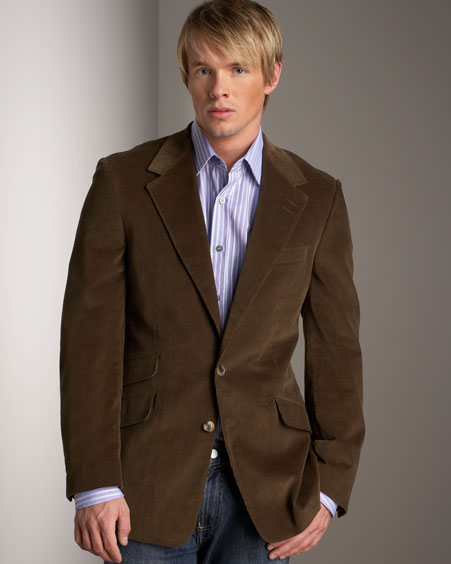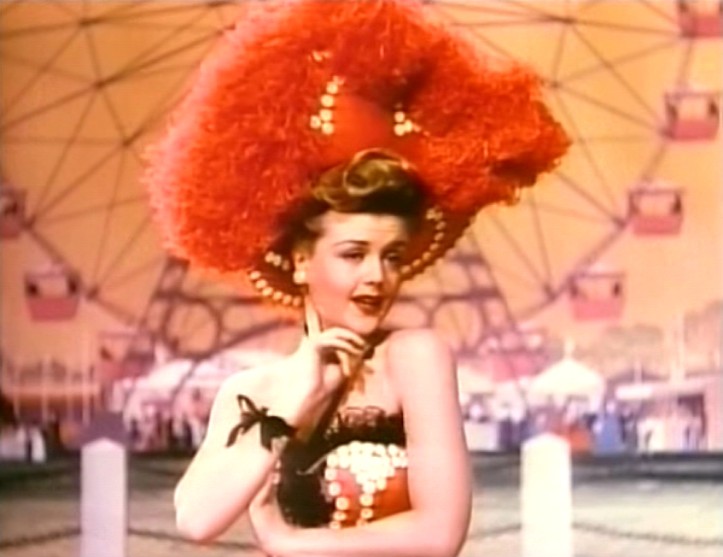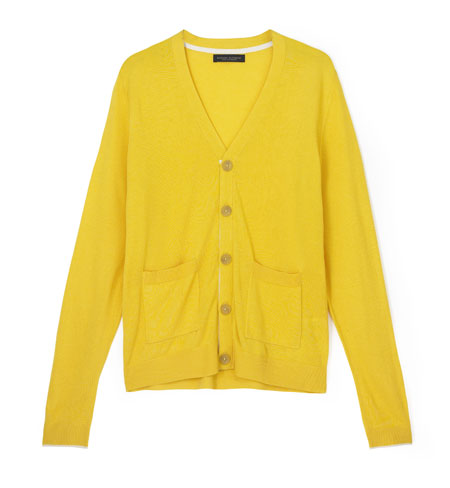The Broadway musical "Hair" has been described as "a celebration of life, a love letter to freedom, and a passionate cry for hope and change." I think that that is a great summary of just why this musical speaks to me. I've listened to the soundtrack over and over, and I would absolutely love to have the opportunity to see it-and be thrilled to have a chance to work on it.
Set in the turbulent times of the late 1960s, Hair centers on a group of young hippies in New York including Berger, the leader, Claude, Sheila, Crissy, and others. The group takes on the feel of a Native American tribe, and searches for a new way, a way to change their world. They question authority, question society, tune in to Eastern philosophy, and live by a philosophy of peace and love. At times, they are forced to fight for liberation and freedom, but are "reborn" after the struggle. In one scene, the group attends a Be-In (a gathering of hippies common in the 60s, featuring music, speeches, marijuana, psychedelics, and a sense of community) and the men burn their draft cards in protest of the war and in symbolic gesture supporting freedom and peace. Claude, however, pulls his card out of the flame, unsure of his feelings about his place and serving in the war. The musical also feature a drug-induced trip sequence that turns bad for Claude because of his fears of the hippie society, his fears of the establishment, and his impending service in the military. Eventually, Claude is called to service, and he has to face that he will not be able to enjoy the pleasures of the lifestyle he's been living once a part of the establishment. There is the image of Claude in uniform, lying on a black sheet, symbolic of him leaving for war. The show ends on a high note, sailing back into its predominantly joyous tone for the end, when the whole group sings the joys of the hippie lifestyle.
Hair introduced a new niche to the world of musical theatre- it was the FIRST rock musical. The score is full of the rocking beats and psychedelic tunes common to the music of the 1960s. This opened up a place in the realm of the theatre for rock music and future rock musicals. Hair was also a commentary of the social environment of the times. It celebrated the rebellious and free spirit of the young people during the era of change and brought insight into their philosophy.
Hair was written by Gerome Ragni and James Rado with music by Galt MacDermot and lyrics by Ragni and Rado. It opened off-Broadway on October 18, 1967 at Joseph Papp's New York Shakespeare Festival Public Theatre, where it was directed by Tom O'Horgan. Interestingly, the play is set in October of 1967-it was very much a play of the times and for the times. After six weeks at Papp's, it moved to Cheetah's Discotheque, where it had to be performed with no intermission so the disco dancing could start at ten, and was seen by a long list of celebrities, including Barbara Streisand. After the Cheetah engagement, it was rewritten and restructured and thirteen songs were added, bringing the score to a total of thirty-three numbers. The show was largely recast, with 6 actors from off-Broadway making to to the Broadway production. It opened again on April 29, 1968 at the Baltimore Theatre, where it was hugely successful with audiences and critics and ran for 1750 performances. It was the 4th longest running musical on Broadway in the 1960s. There were at one time ten Hair companies on national tours. There was a brief revival on Broadway in 1977, but it ran for only one month. It has had much success in Australia, Germany, Denmark, Holland, France, Italy, Japan, and, since the Berlin Wall came down, has travelled for the first time to Poland, Lebanon, the Czech Republic, and Sarajevo, where ABC's Nightline discovered a very powerful production of the show amidst a great deal of war and suffering. Hair finally made it to South Africa with the demise of apartheid in the mid-1990s, where it opened to rave reviews and much acclaim. The show has never played in China, India, Vietnam, most African countries, and Antarctica & the Arctic. From these facts, we can see that, for the most part, where there is a spirit of freedom and liberation, this musical speaks to the people and connects with their desire for peace and love.

 &
& , Nikki
, Nikki &
& , Nikki
, Nikki









 Angela Lansbury has been a prominent actress in movies, on stage, and on television for seventy years. She was born on October 16, 1929 in London, England. The daughter of an actress, she was enrolled in the Ritman School of Dancing and then the Webber Douglas School of Singing and Dramatic Art. Just before the Germans bombed London, she and her mother and brothers managed to move to North America. They fled to Montreal, and then moved to New York City. From New York, they moved West to Hollywood. Here, she met Mel Ballerino, the man who would cast her in her first film roles. Her first appearance on screen was in the 1944 film Gaslight, for which she received nomination for Best Supporting Role for her portrayal of Nancy. She was also featured in The Picture of Dorian Gray in 1945, for which she received a Golden Globe for Best Supporting Actress and a nomination for an Academy Award for Best Supporting Actress. She went on to a great deal of success in both film and on the stage. Notable film appearances include her role as Ms Iselin in the Manchurian Candidate, for which she won the National Board of Review Award for Best Supporting Actress, her role as Miss Price in Bedknobs and Broomsticks, and her voice role as Mrs. Potts in The Beauty and The Beast. In all Angela Lansbury has appeared in fifty-two films, been nominated for twelve awards for these roles, and won five of these awards. Her first role on stage was in 1957 on Broadway in Hotel Paradisio. Her musical debut was in Anyone Can Whistle, the musical by Stephen Sondheim. In 1966 she won the Tony for Best Actress in a Musical for her part as the title role in Mame. Other stage roles include Mama Rose in Gypsy, for which she won the Tony and the Drama Desk Award for Best Leading Actress in a Musical; Mrs. Lovett, for which she won another Tony and another Drama Desk Award for Best Leading Actress in a Musical; Madame Arcati in The Blithe Spirit, for which she won the Tony and the Drama Desk Award for Best Featured Actress in a Play; and Madame Armfeldt in a Little Night Music, which she is still performing in at 84 years of age. In all, she has been nominated for ten awards for these roles, and has won eight of those awards. Lansbury's success has also been extended to television. Her television debut was in 1982, when she played Gertrude Vanderbilt Whitney in a miniseries called Little Gloria...Happy at Last. She portrayed Jessica Fletcher, crime writer, in a television show called Murder, She Wrote from 1884 to 1996. This is perhaps the role she is best known for by the general public. She has done several other shows, miniseries, and guest appearances since then, most recently appearing on Law & Order: SVU as Eleanor Duvall, a role for which she was nominated for an Emmy for Outstanding Guest Actress in a Drama. Over the years, she has been nominate 28 times. She has won at least five of these awards, which include Emmys, Golden Globes, and CableACE Awards. In 1995, Lansbury was named a Disney Legend. She has a star on the Walk of Fame, and she received the Screen Actors Guild Lifetime Achievement Award in 1997, New Dramatists Lifetime Achievement Award in 2000, The Acting Company's First Lifetime Achievement Award in 2002, The Actor's Fund of America Lifetime Achievement Award in 2004, an honorary Doctor of Humane Letters from the University of Miami, and a George and Ira Gershwin Award for Lifetime Musical Achievement. In 1994, Queen Elizabeth II appointed Angela Lansbury a Commander of the Order of the British Empire.
Angela Lansbury has been a prominent actress in movies, on stage, and on television for seventy years. She was born on October 16, 1929 in London, England. The daughter of an actress, she was enrolled in the Ritman School of Dancing and then the Webber Douglas School of Singing and Dramatic Art. Just before the Germans bombed London, she and her mother and brothers managed to move to North America. They fled to Montreal, and then moved to New York City. From New York, they moved West to Hollywood. Here, she met Mel Ballerino, the man who would cast her in her first film roles. Her first appearance on screen was in the 1944 film Gaslight, for which she received nomination for Best Supporting Role for her portrayal of Nancy. She was also featured in The Picture of Dorian Gray in 1945, for which she received a Golden Globe for Best Supporting Actress and a nomination for an Academy Award for Best Supporting Actress. She went on to a great deal of success in both film and on the stage. Notable film appearances include her role as Ms Iselin in the Manchurian Candidate, for which she won the National Board of Review Award for Best Supporting Actress, her role as Miss Price in Bedknobs and Broomsticks, and her voice role as Mrs. Potts in The Beauty and The Beast. In all Angela Lansbury has appeared in fifty-two films, been nominated for twelve awards for these roles, and won five of these awards. Her first role on stage was in 1957 on Broadway in Hotel Paradisio. Her musical debut was in Anyone Can Whistle, the musical by Stephen Sondheim. In 1966 she won the Tony for Best Actress in a Musical for her part as the title role in Mame. Other stage roles include Mama Rose in Gypsy, for which she won the Tony and the Drama Desk Award for Best Leading Actress in a Musical; Mrs. Lovett, for which she won another Tony and another Drama Desk Award for Best Leading Actress in a Musical; Madame Arcati in The Blithe Spirit, for which she won the Tony and the Drama Desk Award for Best Featured Actress in a Play; and Madame Armfeldt in a Little Night Music, which she is still performing in at 84 years of age. In all, she has been nominated for ten awards for these roles, and has won eight of those awards. Lansbury's success has also been extended to television. Her television debut was in 1982, when she played Gertrude Vanderbilt Whitney in a miniseries called Little Gloria...Happy at Last. She portrayed Jessica Fletcher, crime writer, in a television show called Murder, She Wrote from 1884 to 1996. This is perhaps the role she is best known for by the general public. She has done several other shows, miniseries, and guest appearances since then, most recently appearing on Law & Order: SVU as Eleanor Duvall, a role for which she was nominated for an Emmy for Outstanding Guest Actress in a Drama. Over the years, she has been nominate 28 times. She has won at least five of these awards, which include Emmys, Golden Globes, and CableACE Awards. In 1995, Lansbury was named a Disney Legend. She has a star on the Walk of Fame, and she received the Screen Actors Guild Lifetime Achievement Award in 1997, New Dramatists Lifetime Achievement Award in 2000, The Acting Company's First Lifetime Achievement Award in 2002, The Actor's Fund of America Lifetime Achievement Award in 2004, an honorary Doctor of Humane Letters from the University of Miami, and a George and Ira Gershwin Award for Lifetime Musical Achievement. In 1994, Queen Elizabeth II appointed Angela Lansbury a Commander of the Order of the British Empire.

 This wall is lined from left to right in gray filing cabinets about five or six cabinets high.
This wall is lined from left to right in gray filing cabinets about five or six cabinets high. There are three windows along the wall, above the filing cabinets- left, right, and center. They are barred.
There are three windows along the wall, above the filing cabinets- left, right, and center. They are barred.  Mid stage left, there is a large dark wooden desk, totally covered in stacks of papers and a large computer.
Mid stage left, there is a large dark wooden desk, totally covered in stacks of papers and a large computer.  Behind the desk is a very large and comfortable looking desk chair.
Behind the desk is a very large and comfortable looking desk chair. Center stage there is a rather large wooden coffee table painted 70s orange with a few books or magazines on it.
Center stage there is a rather large wooden coffee table painted 70s orange with a few books or magazines on it.  There are low blue benches on either end of the coffee table.
There are low blue benches on either end of the coffee table.
 Mid stage right there is an "L" formation of arm chairs-one line facing left and one line facing front. There would be five or six chairs in each line. The chairs are in varying colors-purple, blue, green, red, yellow, orange.
Mid stage right there is an "L" formation of arm chairs-one line facing left and one line facing front. There would be five or six chairs in each line. The chairs are in varying colors-purple, blue, green, red, yellow, orange.  The wild color scheme-or lack thereof- gives the sense that the principal is trying to relate to the young people, but isn't really succeeding very well. There should be general clutter about. A trashcan should be placed next to the desk- your typical olive green metal wastebasket.
The wild color scheme-or lack thereof- gives the sense that the principal is trying to relate to the young people, but isn't really succeeding very well. There should be general clutter about. A trashcan should be placed next to the desk- your typical olive green metal wastebasket. In the beginning, some students need to be sitting outside the principal's office. This effect could be achieved in a regular proscenium style space by creating a small 8 foot by 3 foot platform that would extend out from the stage on the far stage right. It would be wooden and painted to match the stage. Four chairs matching those inside the principal's office could be placed on this platform.
In the beginning, some students need to be sitting outside the principal's office. This effect could be achieved in a regular proscenium style space by creating a small 8 foot by 3 foot platform that would extend out from the stage on the far stage right. It would be wooden and painted to match the stage. Four chairs matching those inside the principal's office could be placed on this platform.



















